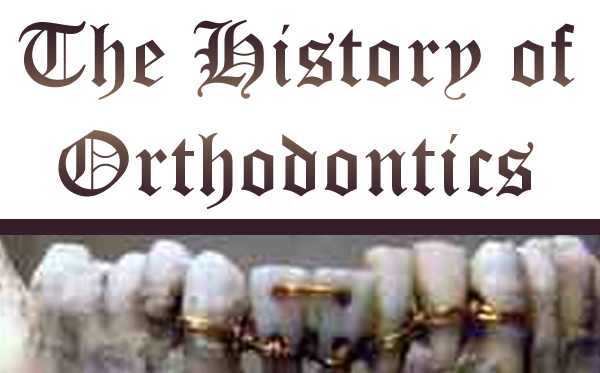 Hello everyone, it’s Mayra! Here is a fun fact about the History of orthodontics in Palo Alto. Did you know that braces go way back to 400-300 BC? Interesting, isn’t it? I read that ancient doctors would use a fibre cord made from animal intestines to close the gaps (YUCK!). I also read that when people were buried, they would have “braces” put in place for the afterlife, so their teeth wouldn’t move.
Hello everyone, it’s Mayra! Here is a fun fact about the History of orthodontics in Palo Alto. Did you know that braces go way back to 400-300 BC? Interesting, isn’t it? I read that ancient doctors would use a fibre cord made from animal intestines to close the gaps (YUCK!). I also read that when people were buried, they would have “braces” put in place for the afterlife, so their teeth wouldn’t move.
Imagine living in Ancient Greece- no computers, cars, or internet. Dentistry and Orthodontics weren’t nearly as developed as today, and people lived without straight, healthy teeth! Today, teeth can be straightened through treatment with braces and/or Invisalign in Palo Alto. However, people alive back then weren’t so lucky. Before 400 BC, nobody had devised a way to straighten teeth. This all changed when Hippocrates and Aristotle contemplated ways to straighten teeth. Today’s archaeologists have found several mummified remains in Egypt and Rome with what seem to be metal bands wrapped around their teeth. Unfortunately, due to poor preservation, primitive technology, and a lack of evidence, orthodontics was pushed to the side until the 1700s, when dentistry was making huge progress.
Orthodontics as a practice became increasingly more accurate in the 18th century thanks to French dentist Pierre Fauchard, who is credited with inventing modern orthodontics. In 1728, he published a book titled “The Surgeon Dentist”, which describes using a device called a “Bandeau”, a horseshoe-shaped piece of iron that helped expand the arch. Another French dentist by the name of Louis Bourdet (the dentist to the King of France) trailed Fauchard’s book with his own, “The Dentist’s Art,” in which he defines tooth alignment and application. Bourdet also perfected the “Bandeau” and is the first dentist recognized for recommending extraction of the patient’s premolar teeth to ease crowding and enhance jaw growth.
Until the mid-19th century, orthodontics did not really exist as a science of its’ own. In 1819, Christophe-Francois Delabarre invented the wire crib, which was an early model of the dental brace. In 1858, dentist, sculptor, artist, and writer Norman William Kingsley wrote the first article on orthodontics and continued his work in his 1880 book “Treatise on Oral Deformities.” Henry A. Baker was the first to combine many previous concepts into a single orthodontic treatment in 1893. Baker conceived the method known as the “Baker Anchorage,” which combined rubber tubing discovered by E.J. Tucker in 1850 and Delabarre’s wire crib.
The early 20th century brought about great change in the world of orthodontics. Edward Angle derived the first simple classification system to describe how crooked one’s teeth are, and was also a great contributor to the design of dental and orthodontic appliances. In addition to these contributions, Angle also founded the first school and college of orthodontics and organized the American Society of Orthodontia in 1901, which later became the American Association of Orthodontists in 1930s. New types of braces (in addition to traditional metal ones) have come about like clear ceramics, self-ligating, or clear aligner systems like Invisalign.
Isn’t it interesting how some of the technology and concepts that we use now have been in use for centuries? One can only wonder what our industry will be like in 20-30 years from now! When you come into the office and meet me, I would love to hear something interesting about how things we use in our daily lives that were invented decades ago have changed. Today, braces are used by orthodontists all over the world to help improve people’s dental health. Dr. Yoo and our team at Palo Alto Orthodontics provide Invisalign, pre and post orthognathic surgery and braces near Stanford, CA for children, adolescents, and adults. So unlike back in 400 BC, your teeth can be healthy and look healthy, thanks to Dr. Yoo and the Palo Alto Orthodontics team. Feel free to call 650-327-2310 if you have any questions or concerns, or to schedule a free consultation today!


